If you want a cheap and easy way to get around, buying an electric scooter could make sense for you. You only need a small upfront cost and a low initial investment compared to a car or even public transit. Annual cost for owning an e-scooter is about $485, while a car can cost over $10,000. You also skip parking headaches and help the environment. Take a look at how fast electric scooter use is growing worldwide:

Still, you need to think about range, weather, and local laws before you buy an e-scooter.
Key Takeaways
-
Electric scooters save you a lot of money compared to cars and public transit, with low costs for charging, parking, and maintenance.
-
Scooters offer great convenience by letting you travel quickly, avoid traffic, and park easily in tight spaces.
-
They are lightweight and portable, making them easy to carry, store, and combine with other travel methods.
-
Riding an electric scooter helps reduce pollution and lowers your carbon footprint, making it an eco-friendly choice.
-
Before buying, consider your commute length, local laws, weather conditions, and safety gear to ensure scooters fit your lifestyle.
Benefits
Cost Savings
If you want to save money, an electric scooter can help you keep more cash in your pocket. The cost of ownership for a car in the city can reach over $7,400 each year, and sometimes even more. In comparison, owning an e-scooter costs as little as $469 per year if you do not use public transport, or about $2,989 if you combine it with buses or trains. That means you could see cost savings of $4,400 to $6,900 every year just by switching to an electric scooter for your daily trips.
|
Cost Component |
Annual Cost (USD) Without Public Transport |
Annual Cost (USD) With Public Transport |
|---|---|---|
|
Scooter Purchase (amortized over 4 years) |
$450 |
$450 |
|
Charging |
$19.20 |
$19.20 |
|
Public Transport |
N/A |
$2,400 |
|
Accessories |
$120 |
$120 |
|
Total Annual Cost |
$469.20 |
$2,989.20 |
Car owners pay much more for insurance, gas, and parking. For example, charging your e-scooter for a whole year costs only $10 to $30, while the average car owner spends about $1,840 on gasoline alone. Parking is often free for scooters, but car parking in cities can cost hundreds of dollars each year. Insurance for an electric scooter is usually optional and much cheaper than car insurance.
|
Cost Category |
Electric Scooter Annual Cost |
Car Annual Cost |
Savings for Scooter Owners |
|---|---|---|---|
|
Fuel |
$10 to $30 (electric charging) |
~$1,840 (gasoline) |
|
|
Parking |
Often free or low-cost, saving hundreds annually |
Often costly, especially in cities |
Hundreds of dollars annually |
|
Insurance |
$50 to $150 annually |
$1,000 to $2,500 annually |
$850 to $2,450 annually |
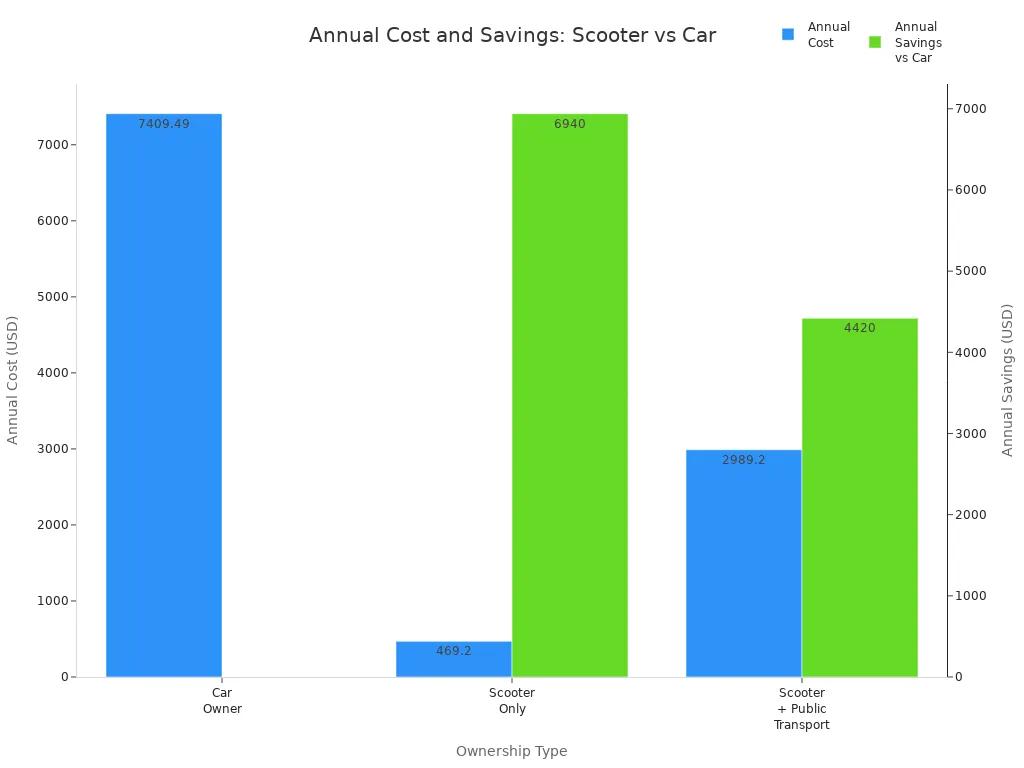
You do not have to worry about big upfront cost or a huge initial investment. Most e-scooters are affordable, and you avoid many of the hidden costs that come with owning a car. If you want a cost-effective transportation option, an electric scooter makes a lot of sense.
Tip: If you use your scooter for most of your daily trips, you will notice decreased transportation costs almost right away.
Convenience
Riding an electric scooter gives you control over your schedule. You do not need to wait for a bus or train. You can leave when you want and go straight to your destination. E-scooters move at speeds of 15 to 20 mph, which is perfect for city streets. You can zip through traffic, use bike lanes, and avoid long waits at stoplights.
|
Transport Mode |
Average Speed |
Maneuverability & Flexibility |
Time Efficiency During Commute |
|---|---|---|---|
|
Electric Scooters |
High: compact size, can avoid traffic jams |
Saves time by bypassing congestion and fixed routes |
|
|
Public Transport |
12.7 to 14 km/h (buses) |
Low: fixed schedules and routes |
Slower during peak hours due to delays and stops |
|
Cars |
Variable, up to 60+ mph |
Moderate: affected by traffic and parking |
Can be slower in urban areas due to congestion |
You can skip the hassle of finding parking. Most scooters fold up, so you can bring them inside your home, office, or even a coffee shop. This makes your daily routine smoother and less stressful.
-
You decide when to leave and where to go.
-
No waiting for schedules or dealing with crowded buses.
-
Easy to park and store almost anywhere.
Portability
One of the biggest electric scooter benefits is how easy they are to carry and store. Most popular models weigh between 23 and 35 pounds. When folded, they are about 40 inches long and less than 18 inches wide or tall. You can pick up your scooter, carry it up stairs, or tuck it under your desk at work.
|
Model |
Weight (lbs) |
Folded Size (inches) |
Portability Impact |
|---|---|---|---|
|
Uscooters GT Sport |
29.6 |
41.5 x 5.6 x 13 |
Lightweight and compact; foldable with handle and latch for easy carrying. |
|
Turboant X7 Max |
34.6 |
N/A |
Slightly heavier but still considered lightweight; removable battery adds convenience. |
|
Gotrax GXL V2 |
26 |
39 x 17 x 14 |
Small footprint and compact folded size; ideal for average-sized adults; easy to carry. |
|
Ninebot Air T15 |
23.2 |
40.3 x 8 x 8.8 |
Ultra-lightweight and very compact; features rolling front wheel and handle for effortless transport. |
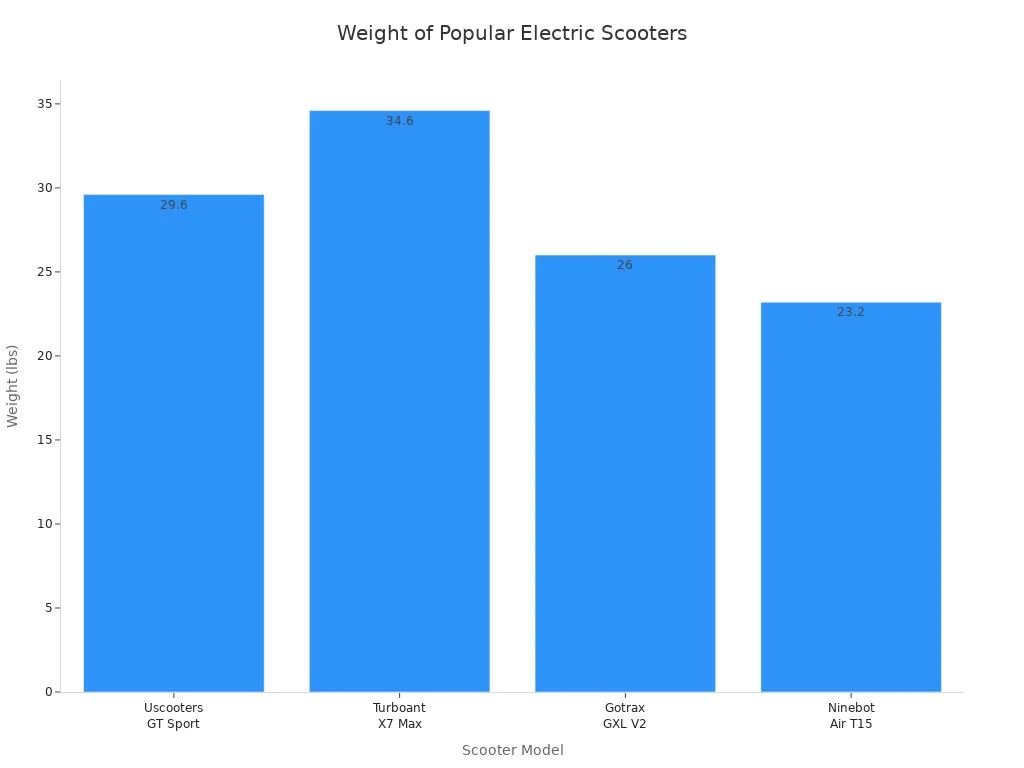
People who use e-scooters say they are much easier to carry than folding bikes or e-bikes. You can bring your scooter onto a bus or train, or even into a store. You do not need to lock it outside, which keeps it safe from theft. If you live in a small apartment or need to combine different types of travel, an electric scooter fits right into your lifestyle.
Environmental Impact
If you care about the planet, you will love how eco-friendly electric scooters are. They produce no tailpipe emissions, so you help keep the air clean. When you use an electric scooter instead of a car for short trips, you can cut your carbon emissions by 50% to 80%. Private scooters create only about 40 grams of CO2 per kilometer, while cars produce 200 to 350 grams for the same distance.
|
Vehicle Type |
CO2 Emissions (grams per km) |
Notes |
|---|---|---|
|
Personal Electric Scooter |
~40 |
Lowest emissions among scooters, no tailpipe emissions |
|
Shared New-Generation E-Scooter |
~105 |
Higher emissions due to logistics and shorter lifespan |
|
Private Petrol Car |
200 - 350 |
Conventional internal combustion engine cars |
|
Shared ICE Vehicle |
~240 |
Shared internal combustion engine cars |
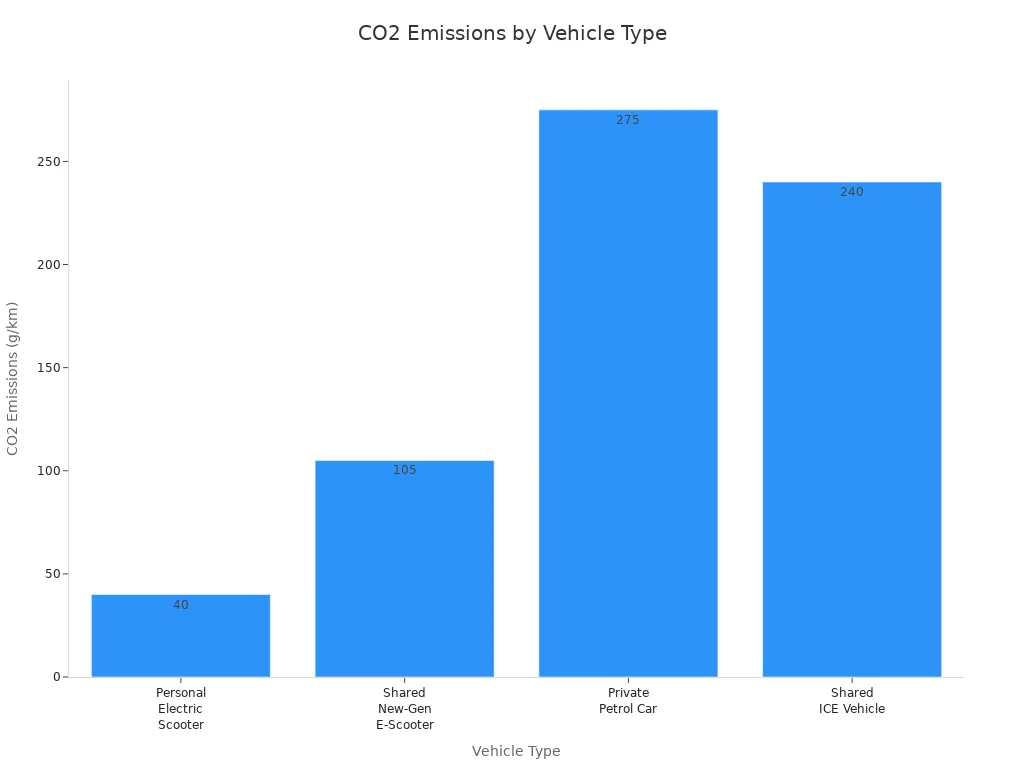
Charging an e-scooter uses very little energy. For example, it costs less than a penny to travel a mile. Electric scooters use much less electricity per mile than electric cars, making them one of the most environmentally friendly ways to get around.
Note: Choosing an electric scooter means you are making a positive impact on the environment every time you ride.
Drawbacks
Range Limits
You might love the freedom of an electric scooter, but you need to know its limits. Most electric scooters can travel between 10 and 30 miles on a single charge. This range works well for short city trips or quick errands. If you have a longer commute or lots of hills, you may find yourself running out of power before you get home. E-bikes usually go farther—up to 60 miles—so they work better for longer rides or hilly areas.
A scooter’s range depends on several things:
-
Battery size and health
-
Your weight and riding style
-
Terrain and hills
-
Weather (cold days can cut your range in half)
-
Tire pressure
As your scooter gets older, the battery will not last as long. Most batteries keep about 80% of their power after 2-3 years or 300-500 charges. If your scooter could go 12 miles when new, it might only go 9 or 10 miles after a couple of years. You can slow this down by charging carefully and keeping your scooter out of extreme heat or cold.
Tip: If you need to travel more than 10 miles each way, or if you have lots of hills, you might want to look at e-bikes or long-range scooters.
Weather Issues
Riding an electric scooter feels great on sunny days, but bad weather can cause problems. Rain, snow, and cold temperatures make riding less safe and can damage your scooter.
Common weather problems include:
-
Wet roads make it easy to slip or skid.
-
Water can get inside the scooter and cause electrical problems.
-
Cold weather drains the battery faster and can even damage it.
-
Snow and ice make it hard to stop or steer.
-
Rain reduces how well you can see and how well others can see you.
Many scooters have water resistance ratings (like IP54 or IPX6), but even these are not made for heavy rain or deep puddles. If you ride in wet weather, you risk damaging your scooter and voiding the warranty. After riding in rain or snow, you should dry your scooter and store it indoors to prevent rust and battery problems.
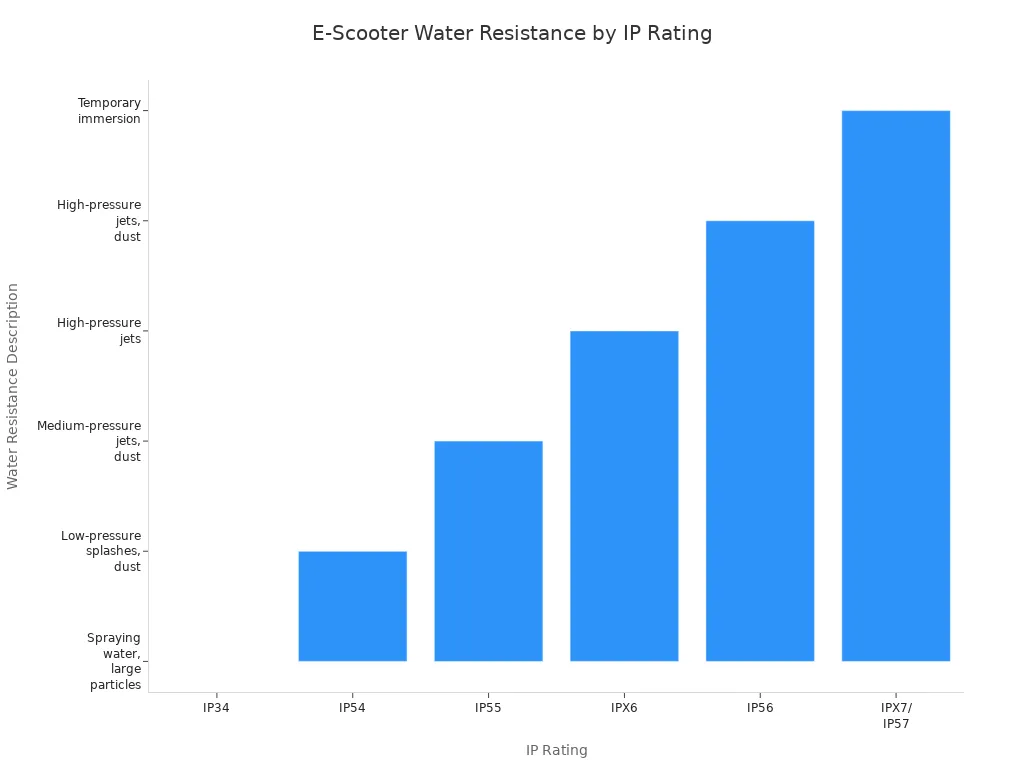
Note: Most manufacturers recommend avoiding heavy rain, snow, and puddles to keep your scooter running well.
Legal Restrictions
Before you buy an electric scooter, check the local laws. Rules change from city to city and country to country. Some places treat scooters like bikes, letting you ride in bike lanes. Others ban them from sidewalks or even public roads. In some cities, you need a license or must be a certain age to ride.
|
Region/Country |
License Needed? |
Age Limit |
Where Can You Ride? |
Helmet Rules |
|---|---|---|---|---|
|
United States |
Sometimes |
16+ |
Varies by city |
Often required for minors |
|
United Kingdom |
No (private use only) |
Varies |
Only in trial areas or private land |
Varies |
|
Australia |
Varies by state |
12-18 |
Some public use, some trial zones |
Varies |
|
Japan |
Yes (fast scooters) |
Varies |
Speed and zone restrictions |
Recommended |
|
Singapore |
Yes |
Varies |
Shared paths and park connectors |
Recommended |
Some cities have started charging registration fees or setting speed limits. If you ride where scooters are not allowed, you could get a fine or have your scooter taken away. Laws can change quickly, so always check the latest rules before you ride.
Callout: Knowing the law helps you avoid tickets and keeps you and others safe.
Safety
Safety is a big concern for electric scooter riders. You share the road with cars, bikes, and pedestrians. Accidents can happen, especially if you ride fast or do not wear a helmet.
Here are some key facts:
-
Scooter riders have higher injury rates per mile than bike riders.
-
Only about 43% of scooter riders wear helmets, compared to 52% of cyclists.
-
Alcohol is involved in 9% of scooter injuries.
-
Most injuries happen in cities, often on busy streets.
-
Head injuries and concussions are more common for scooter riders.
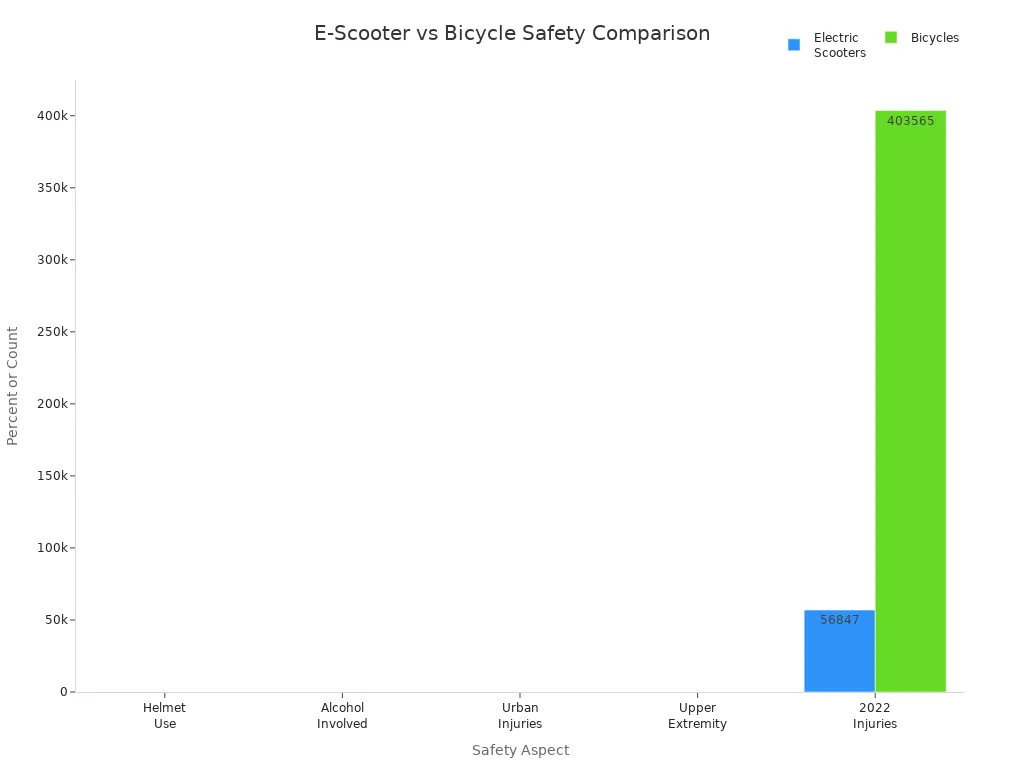
Modern scooters come with safety features like good brakes, lights, and reflectors. Some even have speed limiters and geofencing to keep you safe. Still, the best way to stay safe is to ride carefully, wear a helmet, and follow the rules.
Tip: Always wear a helmet and use lights at night. Responsible riding can prevent most accidents.
Maintenance
Electric scooters need less maintenance than cars, but you still have to take care of them. The average annual maintenance cost is about $140 to $333, much less than a car, but more than you might expect for something so small.
Common maintenance issues include:
-
Battery problems (reduced range, not holding a charge)
-
Motor issues (strange noises, overheating)
-
Brake adjustments (less stopping power, squeaking)
-
Tire wear and flats
-
Loose parts from bumps or accidents
-
Electrical faults (wiring or connector problems)
|
Maintenance Issue |
Description |
|---|---|
|
Battery-related issues |
Problems like failure to hold charge or reduced range, even with proper care and charging. |
|
Motor malfunctions |
Issues such as stalling, unusual noises, or failure to move due to worn components or electrical faults. |
|
Brake problems |
Worn brake pads, squeaking or grinding noises, and reduced stopping power affecting safety. |
|
Tire and wheel issues |
Punctures, flats, tire wear, and wheel misalignment caused by road debris or improper maintenance. |
|
Electrical system faults |
Wiring and connector problems impacting overall scooter performance. |
|
Loose or damaged parts |
Components becoming loose from vibrations or accidents, causing rattling or instability. |
If you ride every day, expect to replace tires and brake pads often. Batteries will need replacing after a few years, which can be a big cost. Regular checks and cleaning help your scooter last longer.
Note: Taking care of your scooter saves money and keeps you safe on the road.
Electric Scooter vs Other Transport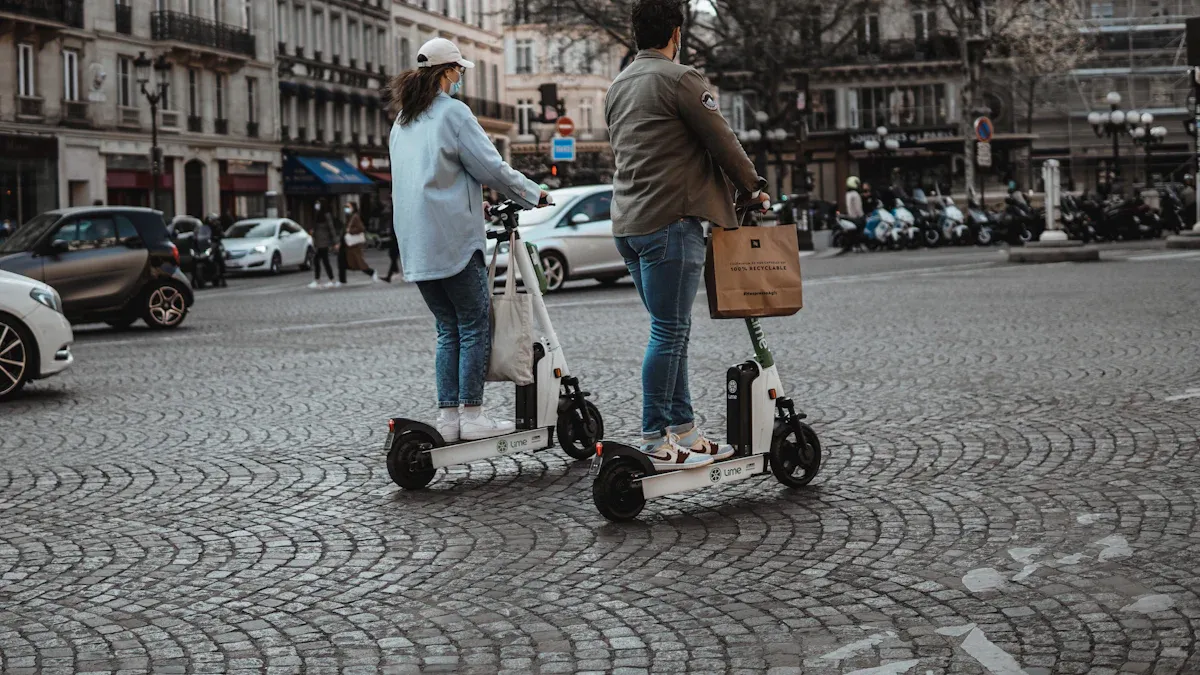
Car
When you compare an e-scooter to a car, the difference is huge—especially for your wallet. Check out this table:
|
Mode of Transportation |
Approximate Yearly Cost |
|---|---|
|
Gasoline Car |
|
|
Electric Car |
Around $8,439 |
|
Owning an Electric Scooter |
Around $485 |
You save thousands each year by choosing an e-scooter for your daily commute. You also skip the hassle of parking, insurance, and traffic jams. In cities, drivers can spend over 150 hours a year stuck in traffic. With a scooter, you zip past the gridlock and park almost anywhere. Scooters are smaller, quieter, and better for the environment. Cars do offer more comfort and protection from bad weather, and they work better for long trips or carrying lots of stuff. But for short city commutes, scooters win on cost, convenience, and speed.
Tip: If you want to avoid traffic and save money, an e-scooter is a smart choice for city life.
Public Transit
Public transit is great for long commutes or when you need to travel far. But for short trips, an e-scooter can be faster and more flexible. Here’s a quick look:
|
Aspect |
Electric Scooters |
Public Transit (NY example) |
|---|---|---|
|
One-Way Fare |
N/A (ownership cost instead) |
$2.90 per ride |
|
Monthly Cost |
Initial investment; no monthly fare |
$132 for unlimited MetroCard |
|
Annual Cost |
Over $1,000 |
|
|
Average Speed |
~20 mph; can avoid traffic |
12.7-14 km/h for buses; trains faster |
|
Flexibility |
High; go where you want, when you want |
Fixed routes and schedules |
Most people use scooters to complement public transit, not replace it. Only about 3% of riders switch from transit to scooters for their commute. Still, if you want to avoid crowded buses and have more control over your route, a scooter is a great option.
Rideshare
Rideshare apps like Uber and Lyft are handy, but the cost adds up fast. If you take two short rides a day, you might spend $180 a month or more. Here’s a chart showing how rideshare costs compare to owning a scooter:
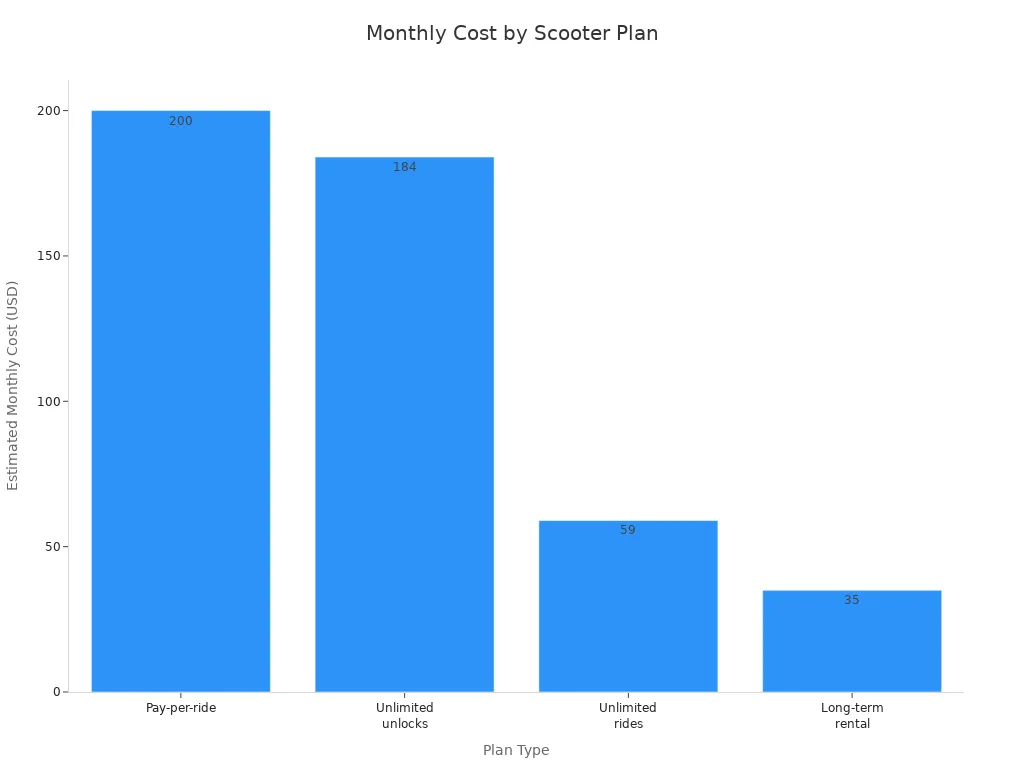
Owning your own scooter means you pay once and ride for years. Rideshare is good for occasional trips, but if you use it every day, buying a scooter saves you money. People also like scooters because they are greener, more private, and always ready when you need them.
-
Scooters are best for short trips and daily commutes.
-
Rideshare is better for longer trips or when you need a car.
E-Bike
E-bikes and e-scooters both make city travel easy, but they fit different needs. E-bikes cost more to buy—usually $1,000 or more. They also need more maintenance because of their gears and bigger parts. But e-bikes are great for longer commutes, hilly areas, and when you want a comfy ride. You can pedal if the battery runs out, which is handy.
|
Aspect |
Electric Scooters |
Electric Bikes |
|---|---|---|
|
Purchase Price |
$1,000-$5,000+ |
|
|
Maintenance |
Low; simple design |
Higher; more complex parts |
|
User Satisfaction |
Fun, quick, easy for short trips |
Comfortable, good for long rides and exercise |
You might pick an e-scooter for quick errands or last-mile travel. Choose an e-bike if you want to ride farther, carry more, or get some exercise during your commute.
Buying an Electric Scooter: Who Should Consider?
Best Fit
Thinking about buying an electric scooter? You might be the perfect match if you want a quick, fun way to get around the city. Here are some signs you should buy an e-scooter:
-
You live in a busy city or a dense neighborhood with lots of places close by.
-
Your daily commute is short, usually under five miles.
-
You want to skip traffic and avoid the hassle of parking.
-
You care about the environment and want to lower your carbon footprint.
-
You do not own a car or want to use your car less.
-
You like having options and sometimes combine your scooter with public transit.
People who buy an e-scooter often enjoy the freedom and flexibility it brings. Men make up most e-scooter riders, but anyone can enjoy the benefits. If you feel confident riding in city streets and want to save money, buying an electric scooter could fit your lifestyle. About 70% of people who try e-scooters have a positive view, so chances are you will too!
Tip: If you want to make your daily urban commutes easier and greener, buying an electric scooter is a smart move.
Not Ideal For
Buying an electric scooter does not work for everyone. You might want to skip buying an e-scooter if:
-
You live far from the city or in a low-density suburb.
-
Your commute is long or goes through areas without bike lanes.
-
You need to travel during bad weather often.
-
Your city has strict rules or no safe places to ride.
-
You need to carry heavy loads or travel with kids.
-
You want a main vehicle for all trips, not just short ones.
Most people use e-scooters for fun, errands, or short trips—not as their main way to get to work. If your daily commute is long or your area lacks scooter-friendly paths, you may find it hard to use one every day. Shared scooters are popular for leisure, but they do not replace cars or trains for longer rides.
Note: If you live outside the city or need to travel far, buying an electric scooter may not be the best choice.
You have seen the pros and cons of owning an electric scooter. You save money, skip traffic, and help the planet. You also face limits with range, weather, and local laws. Ask yourself these questions before you buy:
-
Is your commute short and safe for riding?
-
Can you store and charge it easily?
-
Are local rules friendly for scooters?
If you answer yes, an electric scooter could fit your life.
FAQ
How long does an electric scooter battery last?
Most scooter batteries last 2 to 3 years or about 300 to 500 charge cycles. You can make your battery last longer if you avoid extreme heat or cold and charge it before it drops to zero.
Can you ride an electric scooter in the rain?
You can ride some scooters in light rain, but heavy rain or puddles can damage the electronics. Always check your scooter’s water resistance rating. If you get caught in the rain, dry your scooter as soon as you get home.
Do you need a license to ride an electric scooter?
Most cities do not require a license for low-speed scooters. Some places have age limits or special rules. Always check your local laws before you ride. You do not want to get a ticket!
How fast can electric scooters go?
Most electric scooters reach speeds of 15 to 20 mph. Some high-end models go faster, but city laws may limit your speed. Always ride at a safe speed for your area.
What should you wear when riding an electric scooter?
You should always wear a helmet. Bright clothes help drivers see you. At night, use lights and reflectors. Gloves and closed-toe shoes give you extra protection.
Tip: Safety gear keeps you safe and helps you enjoy your ride with peace of mind.






 S2
S2
 KS4 Pro
KS4 Pro
 MAX Pro
MAX Pro



 Light-Weight & Portable
Light-Weight & Portable
 Long Range
Long Range
 For Heavy Riders
For Heavy Riders
 Big Wheel
Big Wheel
 With Seat
With Seat
 Fast
Fast

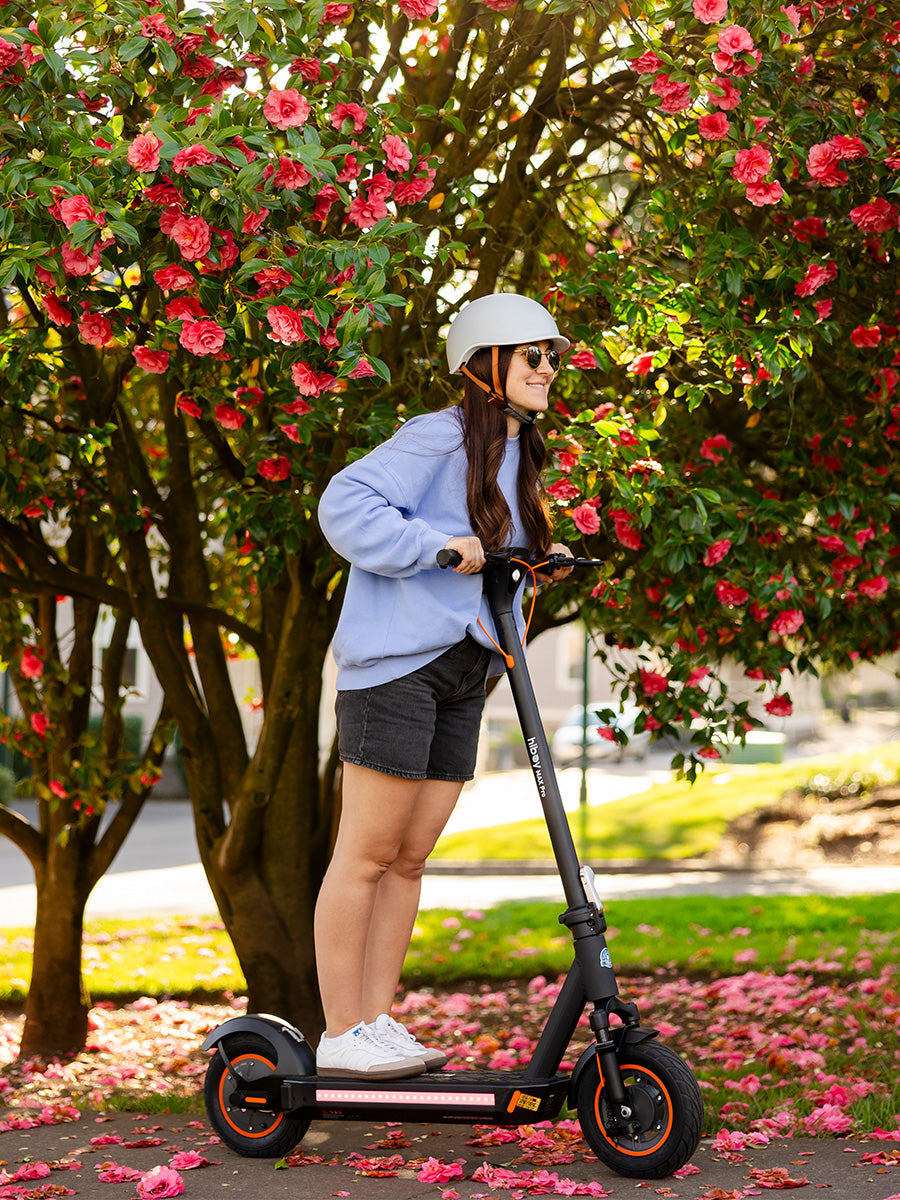


 EX6
EX6
 P6
P6
 C1
C1

 S2 Lite
S2 Lite
 DK1
DK1
 BK1
BK1

 Q2 Lite-A
Q2 Lite-A
 ES-1
ES-1
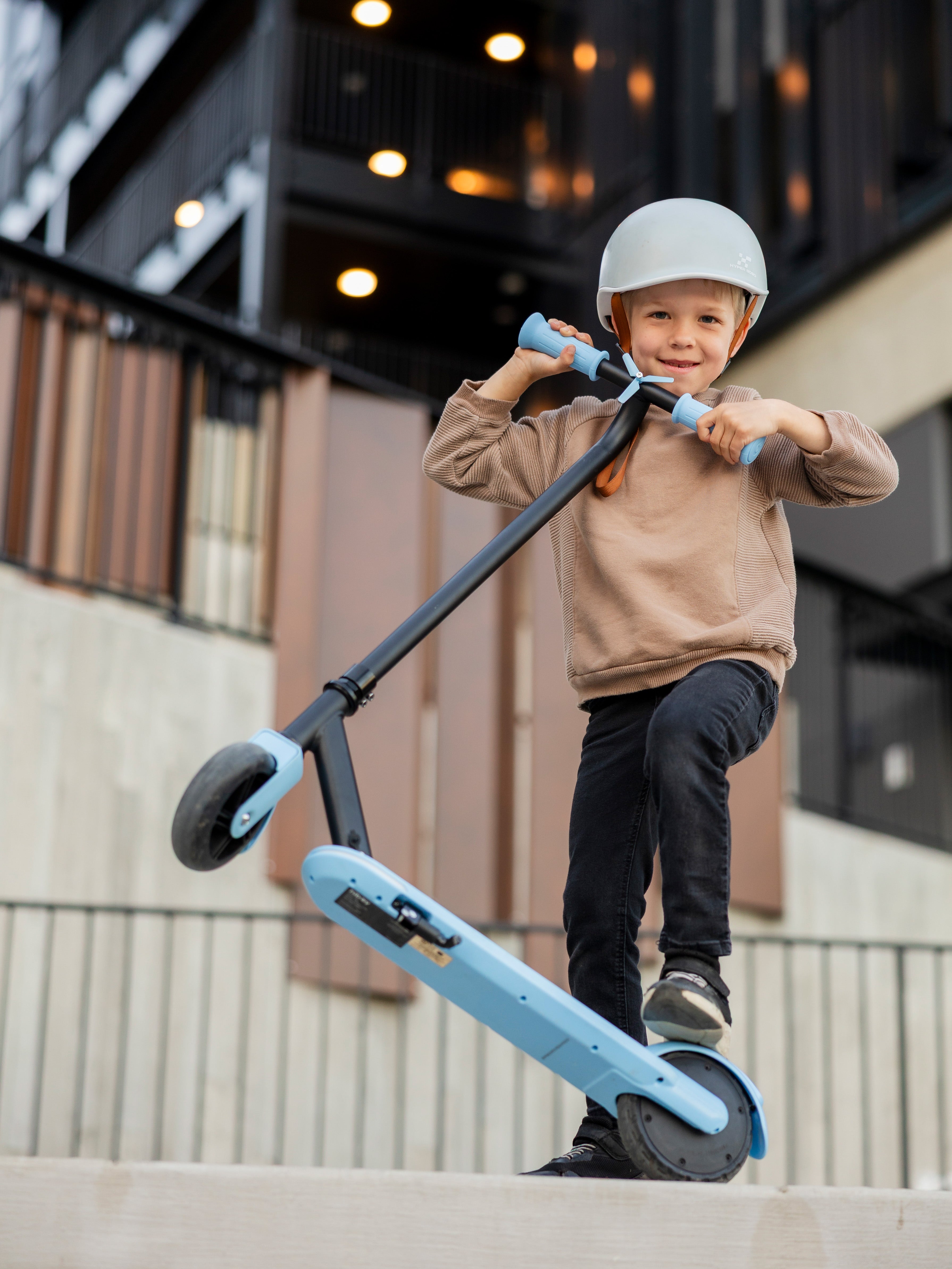
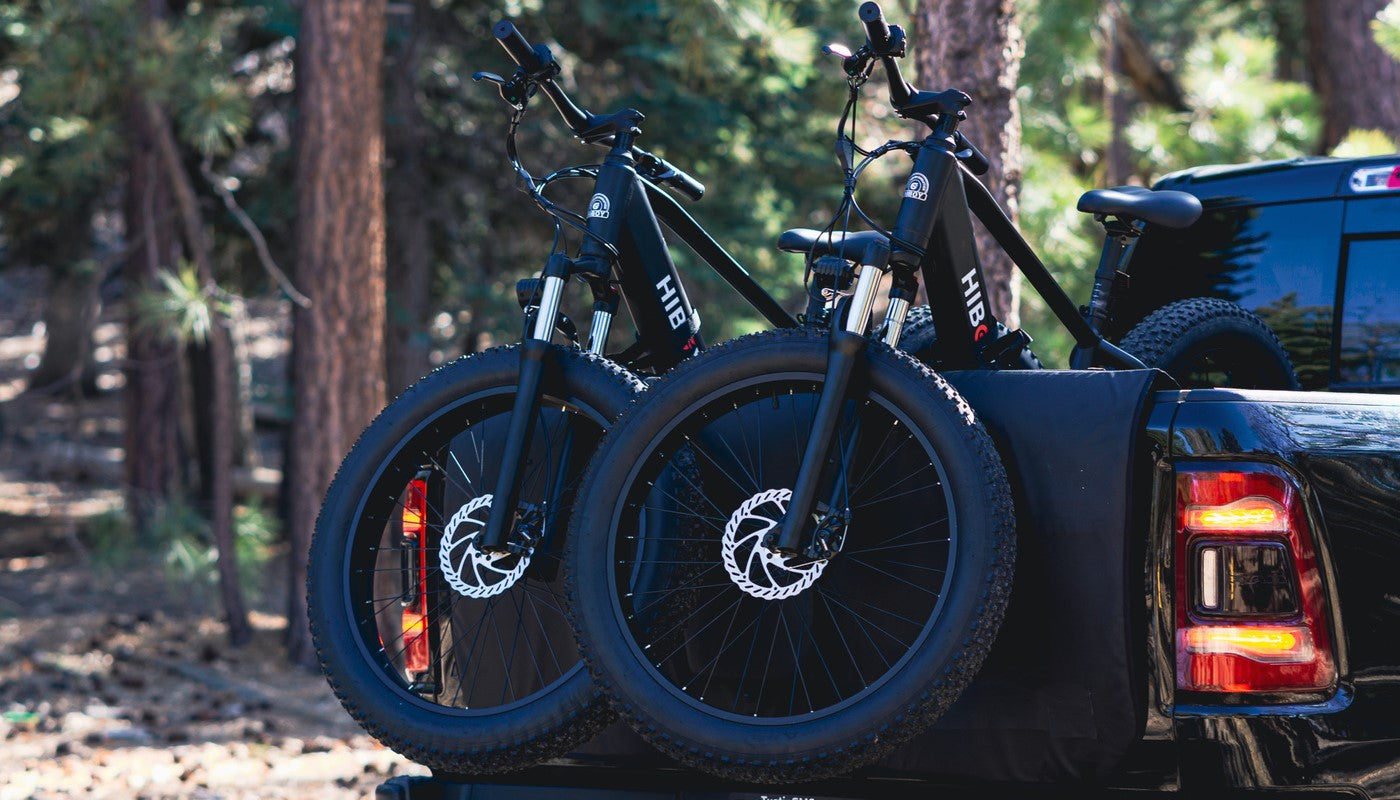
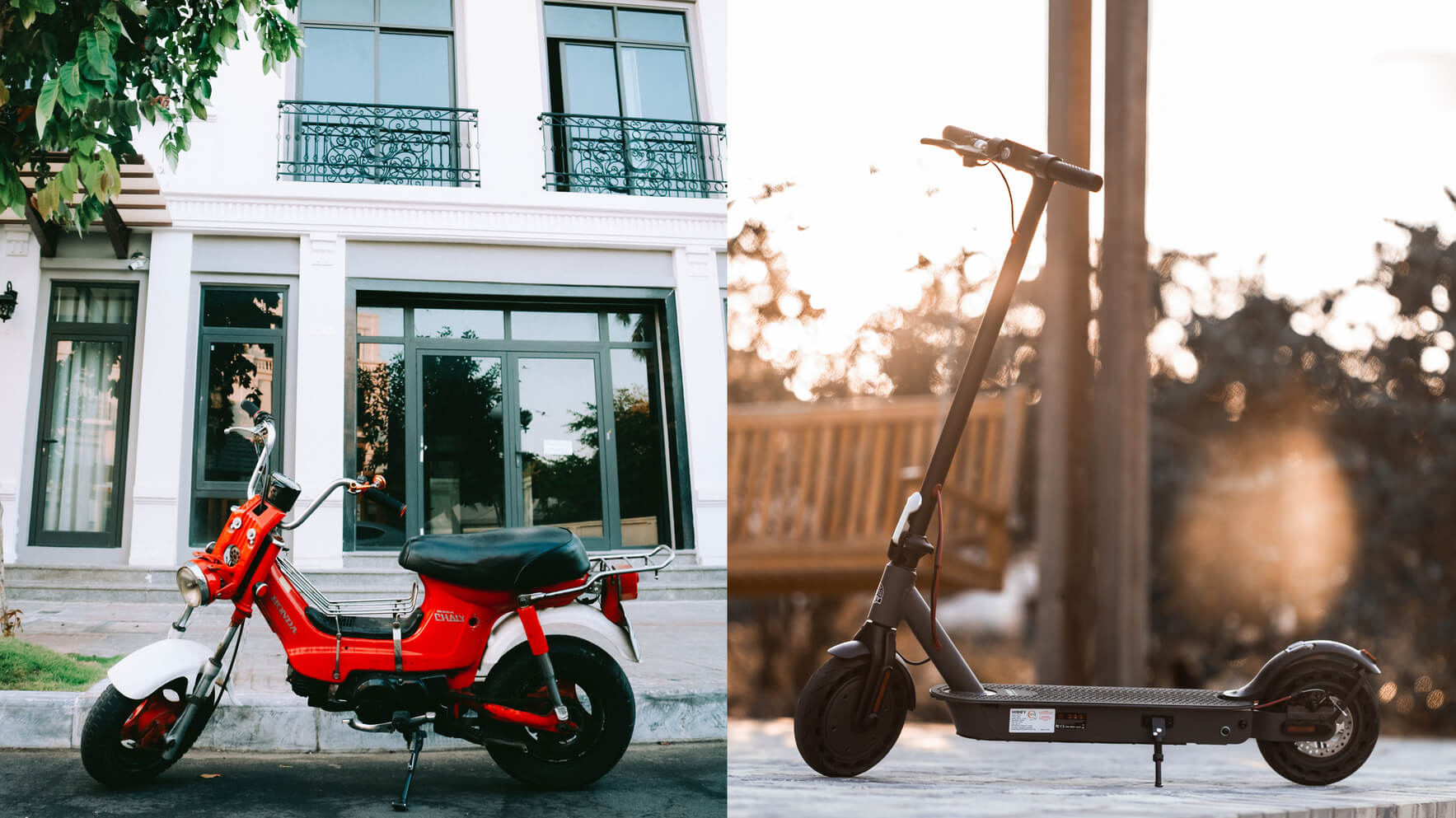







Leave a comment
All comments are moderated before being published.
This site is protected by hCaptcha and the hCaptcha Privacy Policy and Terms of Service apply.